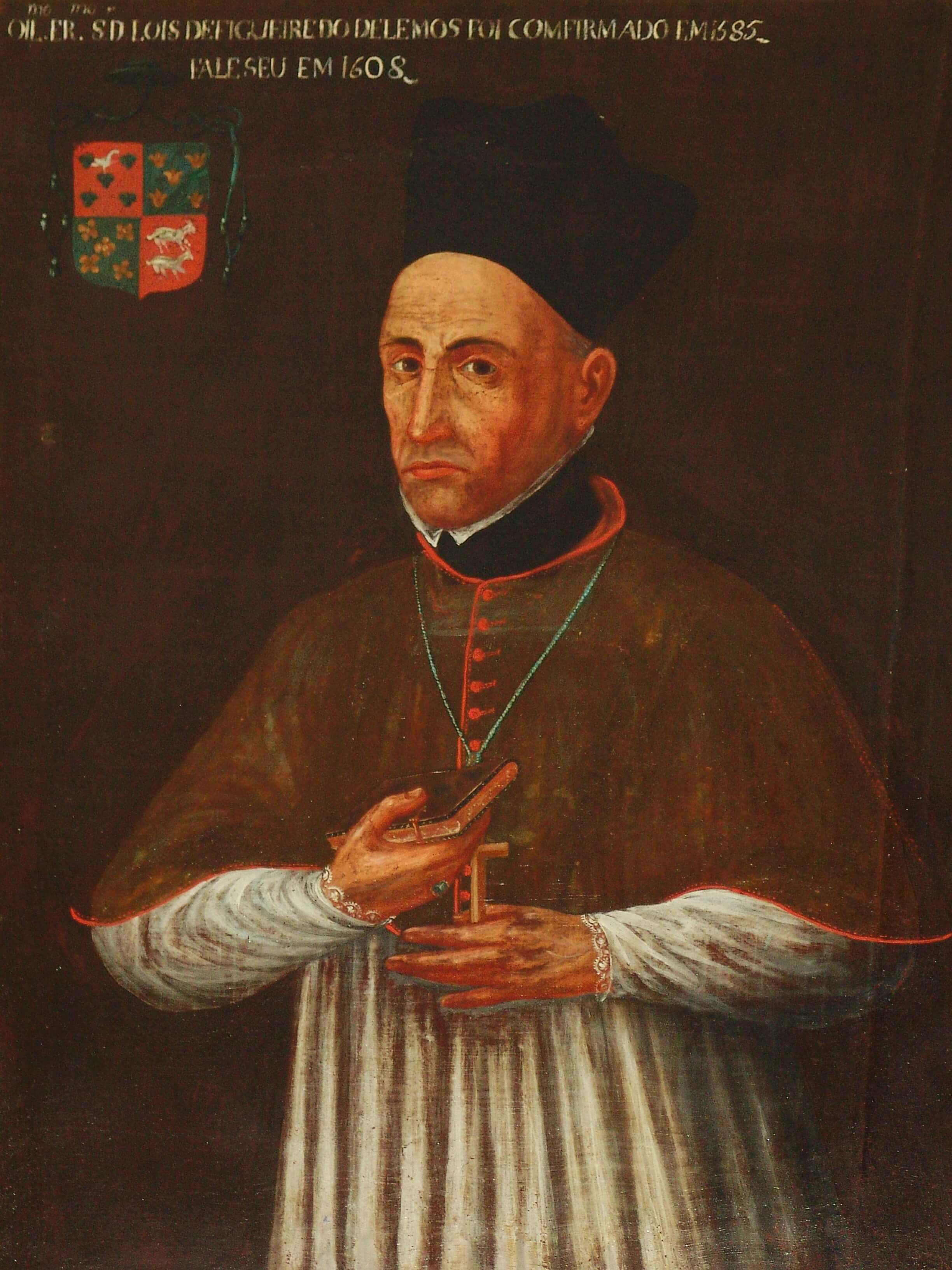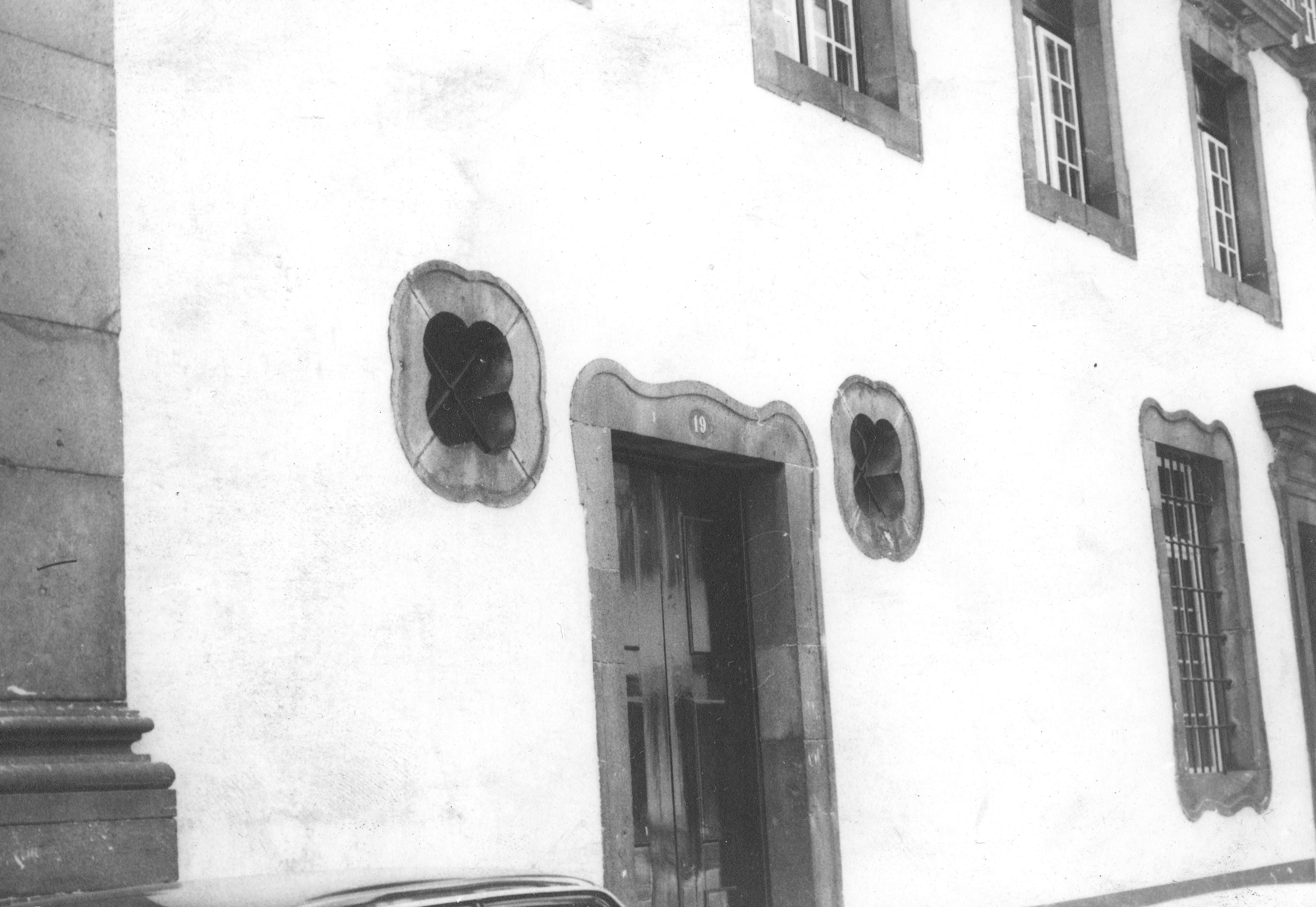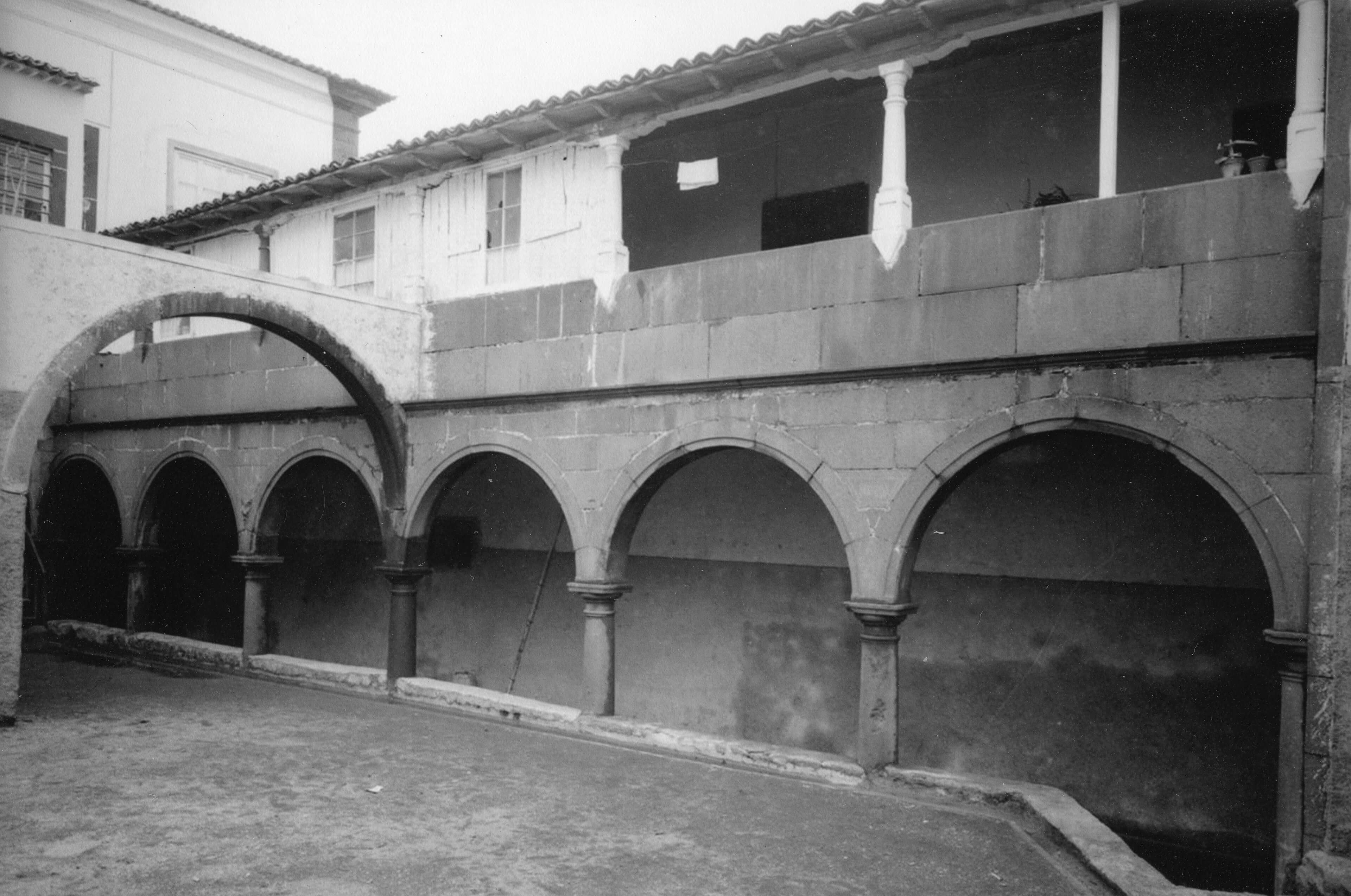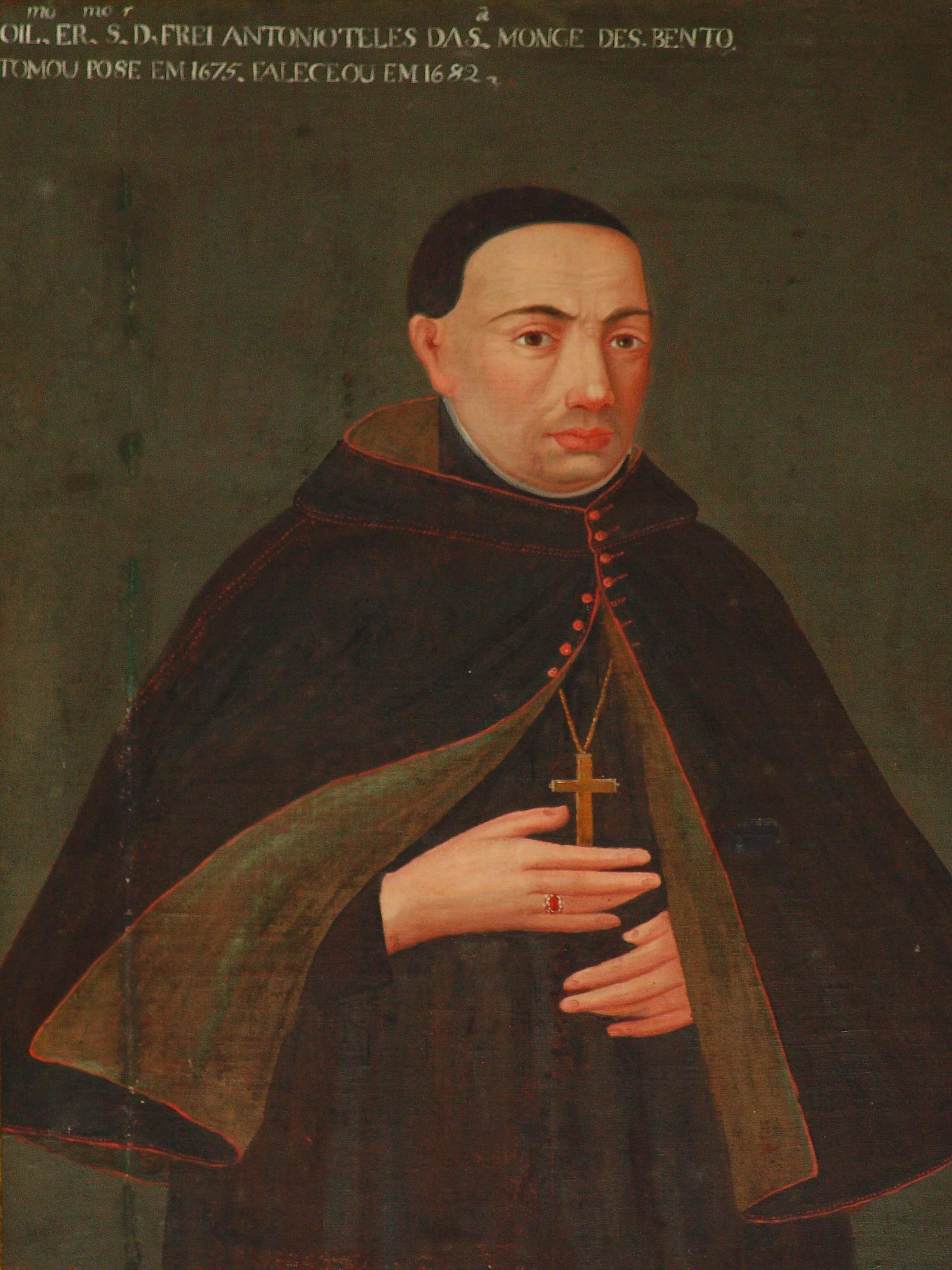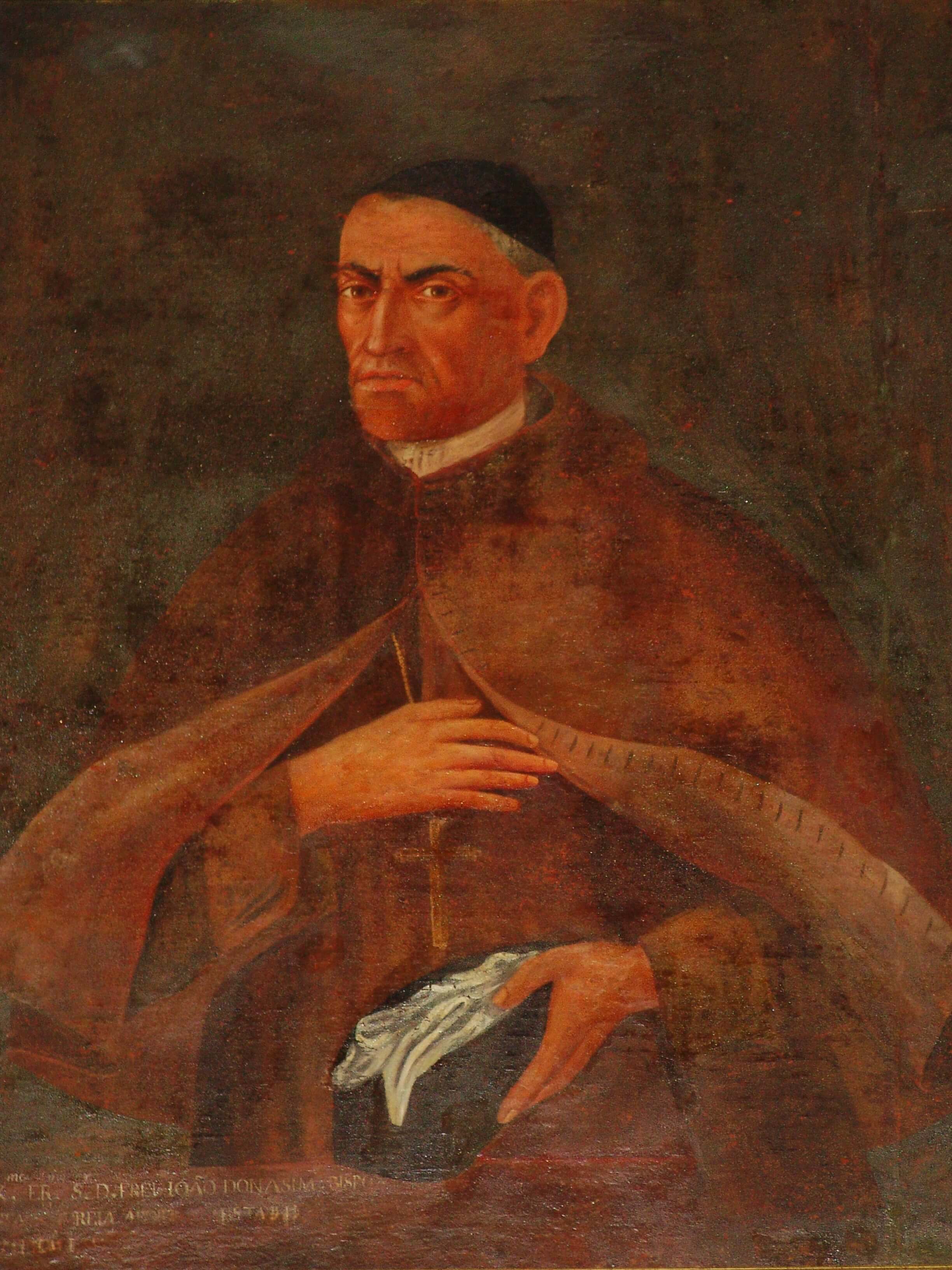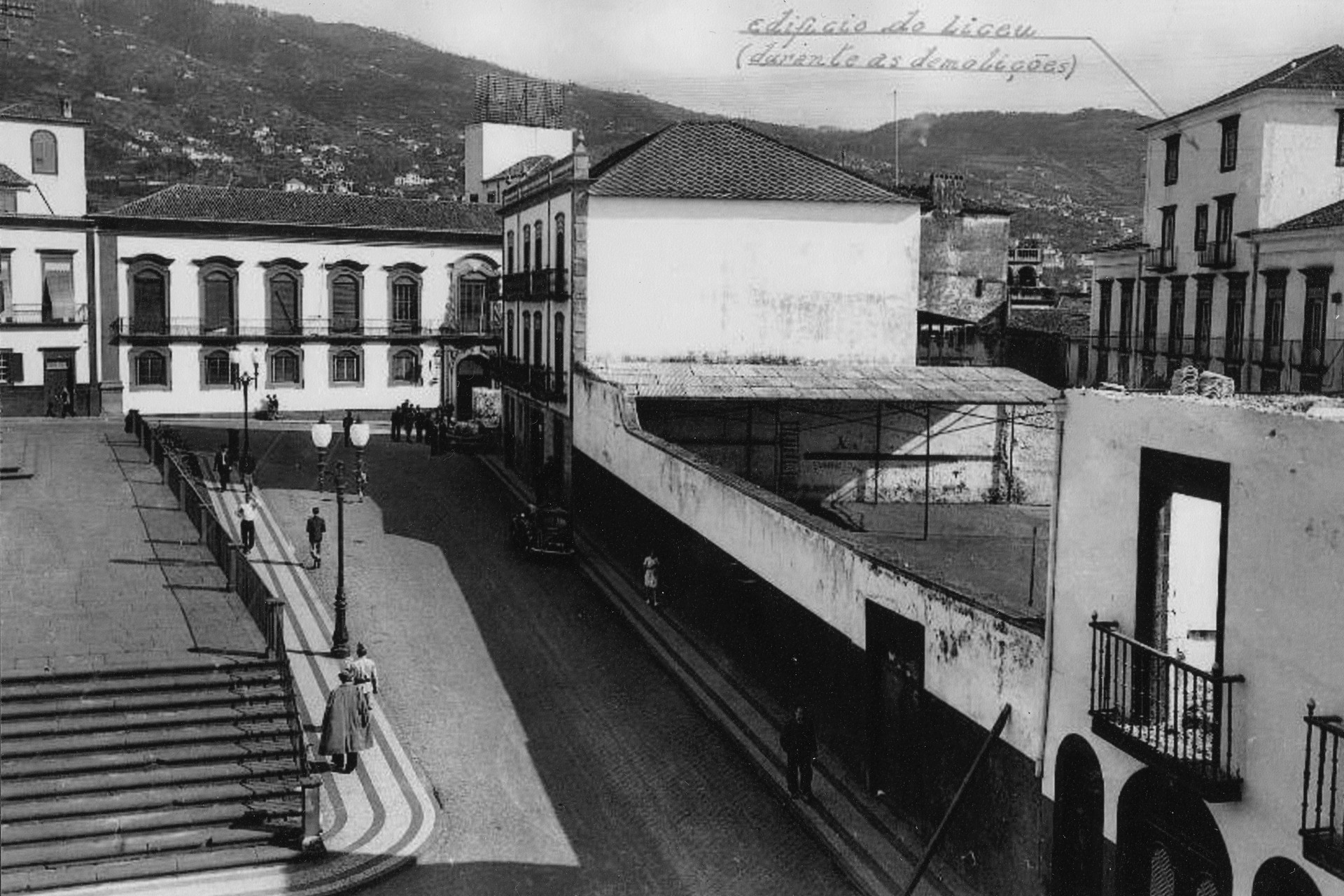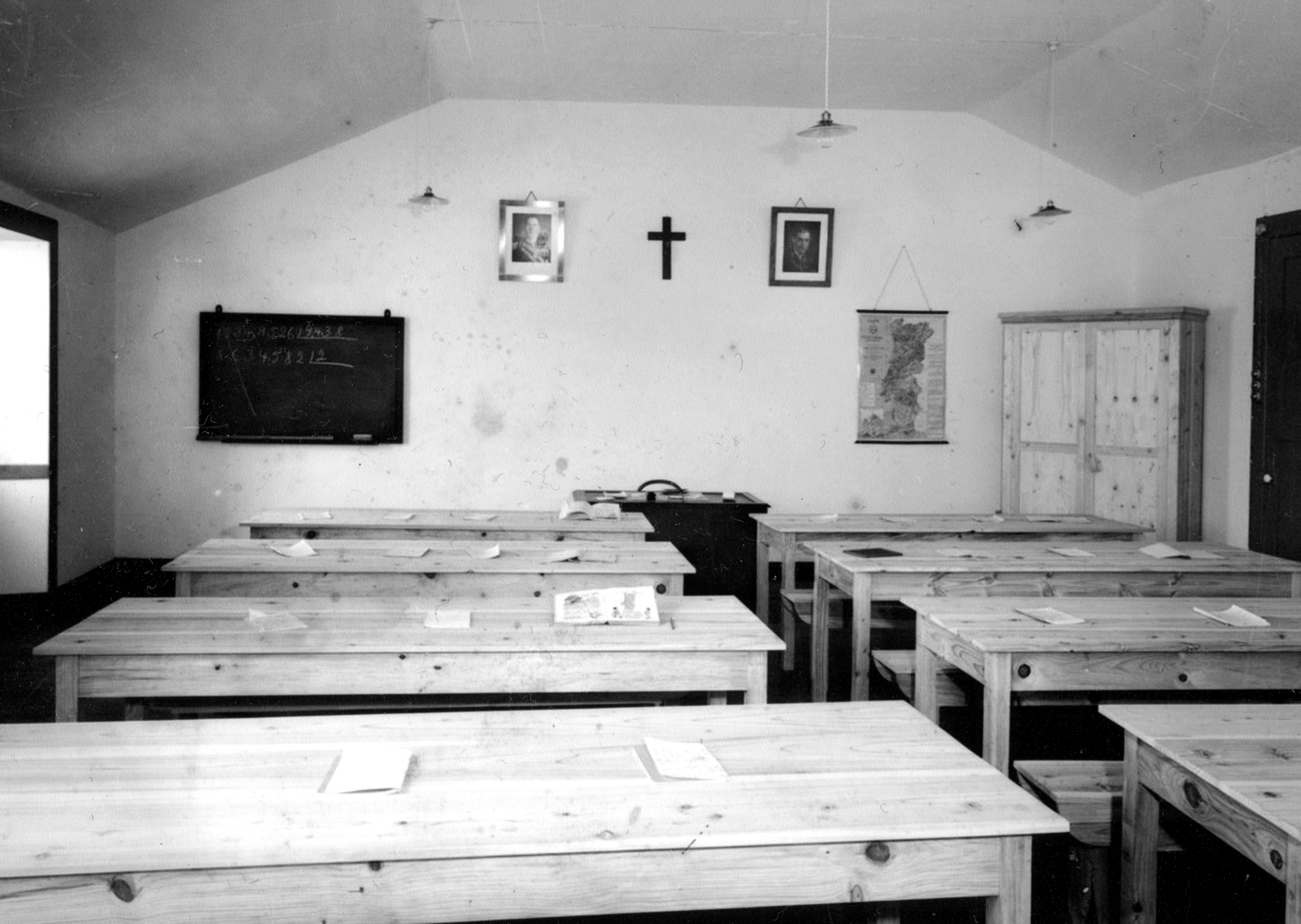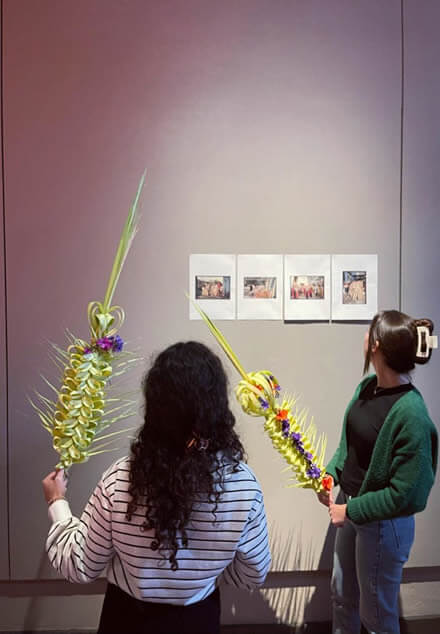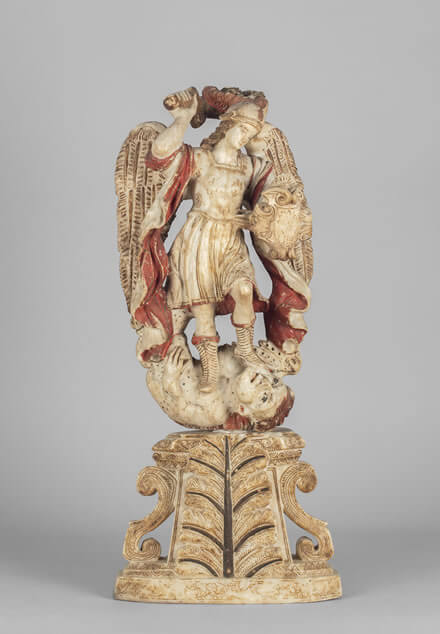A TREASURE IN THE ATLANTIC...
The Sacred Art Museum of Funchal holds in trust remarkable collections, which comprise painting, sculpture, sacred silver, and religious vestments and other textiles, spanning five centuries of the history of Madeira Island.
An important highlight is the Flemish painting collection, brought to the island in the golden age of sugar production, in the 15th and 16th centuries. The Flemish painting panels stand out due to both their quality and their size, seldom seen in pieces of Flemish art on display elsewhere in Europe.
Other high spots include the Flemish sculpture collection, mostly from Mechelen and Antwerp, the Portuguese painting and sculpture collections dating over the 15th and 18th centuries and the sacred silver collection, which includes the large processional cross commissioned by King Manuel I to the Cathedral of Funchal, amongst other outstanding objects.
An important highlight is the Flemish painting collection, brought to the island in the golden age of sugar production, in the 15th and 16th centuries. The Flemish painting panels stand out due to both their quality and their size, seldom seen in pieces of Flemish art on display elsewhere in Europe.
Other high spots include the Flemish sculpture collection, mostly from Mechelen and Antwerp, the Portuguese painting and sculpture collections dating over the 15th and 18th centuries and the sacred silver collection, which includes the large processional cross commissioned by King Manuel I to the Cathedral of Funchal, amongst other outstanding objects.

THE HISTORY OF THE MUSEUM AND BUILDING
In 1934, Manuel Cayola Zagallo, curator at Palácio da Ajuda, undertook a study mission that resulted in an inventory of a very substantial portion of the Flemish paintings scattered throughout the churches and chapels of the Diocese of Funchal. Having become aware of the extraordinary set of paintings found, with the support of the Bishop of Funchal, D. António Pereira Ribeiro, and the governmental entities of the day, the General Council of the Autonomous District of Funchal, he had the works sent to Lisbon for restoration.
Following the major work of conservation and restoration by the workshop of Fernando Mardel, an exhibition was organised in 1949, which displayed this set of artworks for the first time in the National Museum of Ancient Art, an initiative of its director, João Couto, who had accompanied the study of the pieces. Upon their return to Funchal, they were displayed in a room of the Cathedral shortly before being placed in the Museum, which was inaugurated on 1 June, 1955.
At the same time, beginning in the 1940s, a survey was made of the collections of sculptures and gold smithery of the Funchal Diocese, as part of the work of Luíz Peter Clode, which culminated in the publication of some catalogues that were genuinely rare in Portugal. In 1949, Lampadários – Património Artístico da Ilha da Madeira was published, and exhibitions were held in the Santa Clara Convent in Funchal: Sacred Gold Smithery, in 1951, and Religious Sculptures, in 1954, organised jointly by Luíz Peter Clode and Father Pita Ferreira. This made a massive influx of works of Flemish art possible, but with the help of the Diocese, many other works of Portuguese art were included. These were brought in at the time of these exhibitions, or for other reasons, such as their particular artistic importance, or for not being used in the worship.
This effort continued for decades, as many works were progressively added to the Museum collections, especially in the time of D. Teodoro de Faria, due to his help and enthusiasm, as a defender of the diocesan patrimony.
In addition to this provenance, the Museum received a smaller number of pieces donated by private individuals, and sporadically, pieces were acquired to bolster some of the museum groupings. The publication of Catálogo de Arte Flamenga, in 1997, by Luiza Clode and Fernando António Baptista Pereira was a fundamental research work.
Following the major work of conservation and restoration by the workshop of Fernando Mardel, an exhibition was organised in 1949, which displayed this set of artworks for the first time in the National Museum of Ancient Art, an initiative of its director, João Couto, who had accompanied the study of the pieces. Upon their return to Funchal, they were displayed in a room of the Cathedral shortly before being placed in the Museum, which was inaugurated on 1 June, 1955.
At the same time, beginning in the 1940s, a survey was made of the collections of sculptures and gold smithery of the Funchal Diocese, as part of the work of Luíz Peter Clode, which culminated in the publication of some catalogues that were genuinely rare in Portugal. In 1949, Lampadários – Património Artístico da Ilha da Madeira was published, and exhibitions were held in the Santa Clara Convent in Funchal: Sacred Gold Smithery, in 1951, and Religious Sculptures, in 1954, organised jointly by Luíz Peter Clode and Father Pita Ferreira. This made a massive influx of works of Flemish art possible, but with the help of the Diocese, many other works of Portuguese art were included. These were brought in at the time of these exhibitions, or for other reasons, such as their particular artistic importance, or for not being used in the worship.
This effort continued for decades, as many works were progressively added to the Museum collections, especially in the time of D. Teodoro de Faria, due to his help and enthusiasm, as a defender of the diocesan patrimony.
In addition to this provenance, the Museum received a smaller number of pieces donated by private individuals, and sporadically, pieces were acquired to bolster some of the museum groupings. The publication of Catálogo de Arte Flamenga, in 1997, by Luiza Clode and Fernando António Baptista Pereira was a fundamental research work.
THE BUILDING HISTORY
After the fire in the old palace, Luís Figueiredo de Lemos, 7th Bishop of Funchal, Porto Santo and Arguin, had new episcopal headquarters built, beginning in 1594. Jerónimo Jorge, master of royal works, who worked on the defence of the city of Funchal, was hired for the new plans.
Despite several changes and adaptations to the building, the western portion still stands, facing the current Praça do Município and Rua do Bispo, where the royal coat of arms in ashlar stone of the island is still visible.
The simplicity of the construction, facing the Rua do Bispo, displaying windows and doors at irregular intervals, reveals a desire for architectural stripping down, which is best seen in its mannerist lines in the Chapel of St. Louis of Toulosa, which completes the set of buildings.
Despite several changes and adaptations to the building, the western portion still stands, facing the current Praça do Município and Rua do Bispo, where the royal coat of arms in ashlar stone of the island is still visible.
The simplicity of the construction, facing the Rua do Bispo, displaying windows and doors at irregular intervals, reveals a desire for architectural stripping down, which is best seen in its mannerist lines in the Chapel of St. Louis of Toulosa, which completes the set of buildings.
The lintel of the entrance portal of the chapel bears the Latin inscription:
LVDOVICUS* EP. VS* FVNCHALENSIS* and the date 1600, probably corresponding to the start of the works. The north-facing façade, on the current Praça do Município, presents a typically mannerist loggia, with its structure of successive arcades with capitals and double cut-out archivolts, on the ground floor and first floor.
LVDOVICUS* EP. VS* FVNCHALENSIS* and the date 1600, probably corresponding to the start of the works. The north-facing façade, on the current Praça do Município, presents a typically mannerist loggia, with its structure of successive arcades with capitals and double cut-out archivolts, on the ground floor and first floor.
D. António Teles da Silva, Bishop of Funchal, made improvement works between 1675 and 1682.
During the bishopric of D. José de Sousa Castelo Branco, in the early eighteenth century, new adaptation works were carried out, even incorporating the contiguous spaces of the former Seminary, then called the college of São Luís, which operated under the guidance of the Jesuits. The Seminary moved to its own building at that time, which still exists today on the street with that name in Funchal.
During the bishopric of D. José de Sousa Castelo Branco, in the early eighteenth century, new adaptation works were carried out, even incorporating the contiguous spaces of the former Seminary, then called the college of São Luís, which operated under the guidance of the Jesuits. The Seminary moved to its own building at that time, which still exists today on the street with that name in Funchal.
Major works were again carried out after the 1748 earthquake in Funchal. Due to the state of ruin of the Episcopal Palace, Bishop D. João do Nascimento, who had accumulated the office of Governor in 1747, moved his residence to the Palácio de São Lourenço.
The new project for the Episcopal Palace was entrusted to the master of royal works, Domingos Rodrigues Martins.
A part of the works must have been completed in 1751, when the Bishop left the Palácio de São Lourenço to the new Governor, the Count of São Miguel, D. Álvaro José Xavier Botelho e Távora.
The completion of the works would date to the following decade, with the installation of the storied blueandwhite ceramic tile panel from a Lisbon workshop in the watch tower. It presents the sequence of the three theological virtues, Faith, Hope and Love, framed with vegetal and shell motifs, which can be dated to the end of the second quarter of the 18th century.
The set was thus harmonized by a central block of basaltic ashlar stonework of the island with window openings on the upper floor, over the main gate, where the date 1750 is inscribed in the stonework.
The new project for the Episcopal Palace was entrusted to the master of royal works, Domingos Rodrigues Martins.
A part of the works must have been completed in 1751, when the Bishop left the Palácio de São Lourenço to the new Governor, the Count of São Miguel, D. Álvaro José Xavier Botelho e Távora.
The completion of the works would date to the following decade, with the installation of the storied blueandwhite ceramic tile panel from a Lisbon workshop in the watch tower. It presents the sequence of the three theological virtues, Faith, Hope and Love, framed with vegetal and shell motifs, which can be dated to the end of the second quarter of the 18th century.
The set was thus harmonized by a central block of basaltic ashlar stonework of the island with window openings on the upper floor, over the main gate, where the date 1750 is inscribed in the stonework.
Between 1913 and 1942, the Episcopal Palace would serve as the Funchal Lyceum. To the north of the building, in what today corresponds to a significant part of the Praça do Município, there was a private fenced area of the Palace.
Practically intact since the mid-eighteenth century, the pavement of black and white geometric motifs in pebble stones is still preserved in the main courtyard. The monumental stairwell, with baroque-style elliptical windows, consists of a single flight of stairs that originally went in two directions, but today is reduced to one.
Practically intact since the mid-eighteenth century, the pavement of black and white geometric motifs in pebble stones is still preserved in the main courtyard. The monumental stairwell, with baroque-style elliptical windows, consists of a single flight of stairs that originally went in two directions, but today is reduced to one.
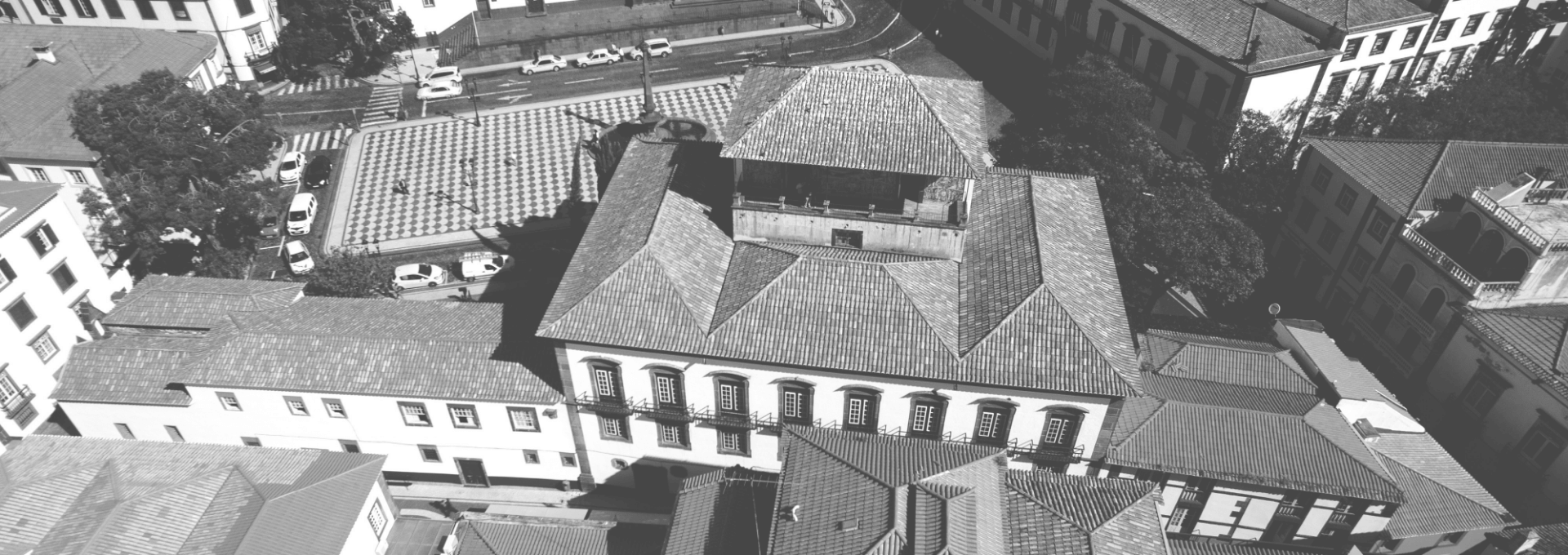
MISSION & VALUES
“THE MISSION OF SACRED ART HAS ALWAYS BEEN TO BE UPLIFTING, STIMULATE CONTEMPLATION, BE A WINDOW INTO INFINITY”.
D. Teodoro de Faria - Bishop Emeritus of Funchal
MISSION/VISION & VALUES
In accordance with what is set forth in the preamble of the MASF statutes, “Its ultimate mission is to promote the dignity of the human person through the cultural assets of the Church, as a permanent witness to the pedagogy of art and beauty, for the community and visitors.
As an entity of the Diocese of Funchal, the Museum also seeks to evangelize by art through the pastoral care using culture, always with the goal of the sustainable development of society”.
The primary purpose of the Sacred Art Museum of Funchal is the preservation, research and dissemination of artistic heritage from the churches and chapels of the Diocese of Funchal. Combining the religious and cultural dimensions of objects, the Museum is founded on the conviction that it is possible to reconcile these two dimensions – without subordinating one to the other – to provide a service for the common good.
Our vision is about being a space for study, preservation, enjoyment, learning, reflection and dialogue, open to all and with progressively sustainable management. And being a key museum installation in the Autonomous Region of Madeira.
These are the values that mirror the organizational culture of the MASF that are to be internalized and practiced by all employees of the Museum. They seek to mediate the institution’s presence in its relations with the public and embody its identity in interinstitutional relations. The values are vectors of motivation and quality, oriented towards a cultural service that promotes the common good.
As an entity of the Diocese of Funchal, the Museum also seeks to evangelize by art through the pastoral care using culture, always with the goal of the sustainable development of society”.
The primary purpose of the Sacred Art Museum of Funchal is the preservation, research and dissemination of artistic heritage from the churches and chapels of the Diocese of Funchal. Combining the religious and cultural dimensions of objects, the Museum is founded on the conviction that it is possible to reconcile these two dimensions – without subordinating one to the other – to provide a service for the common good.
Our vision is about being a space for study, preservation, enjoyment, learning, reflection and dialogue, open to all and with progressively sustainable management. And being a key museum installation in the Autonomous Region of Madeira.
These are the values that mirror the organizational culture of the MASF that are to be internalized and practiced by all employees of the Museum. They seek to mediate the institution’s presence in its relations with the public and embody its identity in interinstitutional relations. The values are vectors of motivation and quality, oriented towards a cultural service that promotes the common good.
The MASF asserts itself as a place that constructs knowledge. Research in the fields of art history, museology, heritage and, in particular, religious heritage, are the structuring and guiding foundations of its action.
We seek to act transparently in all processes, whether at the level of financial management or in the specific work areas as a museum institution.
We believe in dialogue as a path of collaboration and collaborative enrichment both internally and externally.
We are committed to living and practicing tolerance through the communication we promote, through our actions, and through self-reflection and the revision of established practices and discourses.
The MASF is an organization that seeks to assume responsibility in all areas of its action: with its audiences and with the community of which it is part and which it serves; and for its collection, through the continuous work of study, preservation and dissemination.
We are a young and creative team that seeks innovation in its methods and approaches, in view of the contingencies and limitations of a small museum institution and fostering a more effective and attractive communication.
We are guided by the spirit of service. We strive to reflect this attitude continuously in the relationship with our visitors, researchers and community.
In all our actions, initiatives and projects, our desire is that the value of sustainability will contribute, in all its dimensions, to the consolidation, presence, and growth of the Institution in the short and long term, translated into the clearly evident and socially responsible attitudes of an institution invested in the construction of a more balanced future for all.
ADMINISTRATION

On June 1, 2020, by episcopal decision, the Museu de Arte Sacra do Funchal – MASFUNCHAL Foundation was created.
Until that date, the Sacred Art Museum of Funchal (MASF) had no legal or fiscal personality of its own, being dependent on the entity “Seminário Maior de Nossa Senhora de Fátima da Diocese do Funchal”. This model remained in place for many years, but its limitations became more and more evident: the need to speed up the implementation of objectives and goals that would give the Museum more visibility and, if possible, greater sustainability, required moving towards another organizational model.
Thus, by the will and decision of the Bishop of the Diocese, the Funchal Sacred Art Museum Foundation was created, so that the institution “can better achieve its objectives and, at the same time, achieve greater effectiveness in its functioning at the service of the People of God and culture in general”, with the subsequent “legal-canonical change in the organizational structure of the Museum”, as expressed in the Preamble to the new Statutes. Article 1 “Name and Nature” establishes “a perpetual institution, with the nature of a non-for-profit public autonomous canonical foundation. It enjoys legal personality in the canonical forum, and is subject to the duties and obligations consistent with its nature.” The foundation’s social objective is “the promotion of the dignity of the human person and the sustainable development of society, and pursues religious purposes, placing the artistic and cultural goods of the Church at the service of evangelization, pastoral care and culture” (Statutes, Article 3(1)), the proper management and representation of the Foundation being exercised by its governing bodies, as laid out in Chapter III of the Statutes (the Board of Directors, the Executive Board, the Board of Trustees, and the Single Auditor).
The artistic, programming and curatorial activity of the Museum, as well as its own obligations and purposes, both at the service of the public and in the preservation and study of the collections, are therefore framed by the organizational model resulting from the Foundation’s Statutes.
It is in this organizational context that the Sacred Art Museum of Funchal seeks to achieve programming goals that meet its objectives of being a strong cultural presence in the city of Funchal, at the service of the Madeiran community and visitors, constituting an offer of the greatest importance to our cultural tourism. The safeguarding and dissemination of its priceless collection – a genuine 500-year-old treasure, unique in the Atlantic zone – confers on the Foundation its primary objective: to preserve and disseminate its precious artistic heritage from the 15th to the 19th centuries, so that the Sacred Art Museum of Funchal increasingly becomes a key museum institution.
Until that date, the Sacred Art Museum of Funchal (MASF) had no legal or fiscal personality of its own, being dependent on the entity “Seminário Maior de Nossa Senhora de Fátima da Diocese do Funchal”. This model remained in place for many years, but its limitations became more and more evident: the need to speed up the implementation of objectives and goals that would give the Museum more visibility and, if possible, greater sustainability, required moving towards another organizational model.
Thus, by the will and decision of the Bishop of the Diocese, the Funchal Sacred Art Museum Foundation was created, so that the institution “can better achieve its objectives and, at the same time, achieve greater effectiveness in its functioning at the service of the People of God and culture in general”, with the subsequent “legal-canonical change in the organizational structure of the Museum”, as expressed in the Preamble to the new Statutes. Article 1 “Name and Nature” establishes “a perpetual institution, with the nature of a non-for-profit public autonomous canonical foundation. It enjoys legal personality in the canonical forum, and is subject to the duties and obligations consistent with its nature.” The foundation’s social objective is “the promotion of the dignity of the human person and the sustainable development of society, and pursues religious purposes, placing the artistic and cultural goods of the Church at the service of evangelization, pastoral care and culture” (Statutes, Article 3(1)), the proper management and representation of the Foundation being exercised by its governing bodies, as laid out in Chapter III of the Statutes (the Board of Directors, the Executive Board, the Board of Trustees, and the Single Auditor).
The artistic, programming and curatorial activity of the Museum, as well as its own obligations and purposes, both at the service of the public and in the preservation and study of the collections, are therefore framed by the organizational model resulting from the Foundation’s Statutes.
It is in this organizational context that the Sacred Art Museum of Funchal seeks to achieve programming goals that meet its objectives of being a strong cultural presence in the city of Funchal, at the service of the Madeiran community and visitors, constituting an offer of the greatest importance to our cultural tourism. The safeguarding and dissemination of its priceless collection – a genuine 500-year-old treasure, unique in the Atlantic zone – confers on the Foundation its primary objective: to preserve and disseminate its precious artistic heritage from the 15th to the 19th centuries, so that the Sacred Art Museum of Funchal increasingly becomes a key museum institution.
Executive Board
Dr.ª Graça Maria Nóbrega Alves
Dr.ª Elisa Vasconcelos de Freitas
Cónego João Francisco Dia
Administrative Council
Dr. Ricardo Nuno Teixeira de Gouveia
Sr. Luis Lemos Gomes
Dr. Luis Sotero Gomes
Board of Trustees
D. Teodoro de Faria
Doutora Ana Filipa Gandum Ribeiro
Doutora Ana Isabel Torres Garcia Portugal
Dr. António Jorge Mammerick Trindade
Dra. Graça Maria Nóbrega Alves (por inerncia)
Doutora Isabel da Câmara Santa Clara Gomes Pestana
Doutor Joaquim José Sanches Pinheiro
Cónego José Fiel Sousa (por inerência)
Doutora Maria Isabel Rocha Roque
Dra. Maria Leonor Morgado Mevill de Araújo Ferreira
Doutora Rita Maria Camacho Correia Rodrigues
Executive Board
Dr. João Henrique Gonçalves da Silva
Dr. Martinho Pestana Mendes
Canon João Francisco Dias
Administrative Council
Dr. Ricardo Nuno Teixeira de Gouveia
Dr. Roberto Santa Clara Gomes
Dr. Francisca Perry Vidal
Board of Trustees
D. Teodoro de Faria, Bispo Emérito do Funchal
Dr. João Henrique Gonçalves da Silva (natural member)
Canon José Fiel de Sousa (natural member)
Canon Manuel Martins (natural member)
Professor Doctor Fernando António Baptista Pereira
Professor Doctor Isabel da Câmara Santa Clara Gomes Pestana
Professor Doctor Ana Isabel Torres Garcia Portugal
Dr. Francisco Manuel Oliveira Costa
Dr. António Jorge Mammerick Trindade
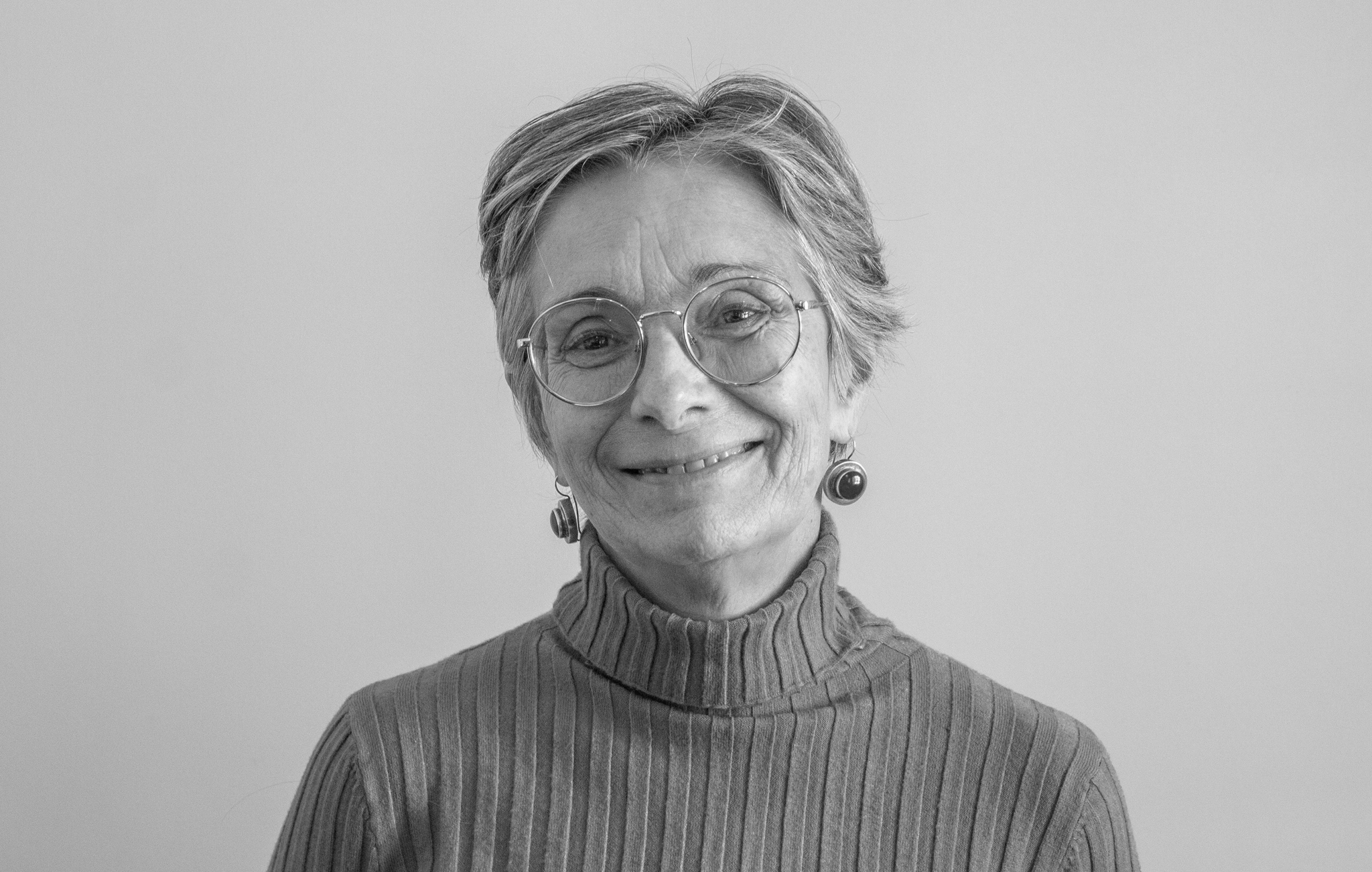
Welcome!
The Sacred Art Museum of Funchal is a guardian to great treasures of the Madeiran identity: its culture, the faith that has guided its history, since the beginning, since the time when caravels set out to sea loaded with sugar and brought from the world, particularly from Flanders, the art that enriched chapels and churches.
The uniqueness of its collections and the place they can occupy in the understanding, research and interpretation of the identity of Madeira, in the Atlantic context, makes the Museum an obligatory place of passage [and stopover], integrating it into the cultural, tourist, educational and experiential dynamics of the city of Funchal.
The diversity and excellence of the Sacred Art Museum of Funchal’s collection, which brings together goldsmithing, painting, sculpture, textiles and furniture, allows, in addition to enjoyment and knowledge, an encounter with History and an experience of the sacred, now also enriched with an Icon collection, of Eastern, Orthodox tradition.
The Sacred Art Museum of Funchal aims, therefore, to be a hub of culture and memory, a place of dialogue, an institution of reference in the cultural offer of Madeira, a place where the past meets the Future and, together, construct new narratives. Its programming, temporary exhibitions and mediation services make the Museum a place of reference in the cultural universe of Madeira. It is in the heart of the city and awaits your visit.
Graça Maria Nóbrega Alves
The Sacred Art Museum of Funchal is a guardian to great treasures of the Madeiran identity: its culture, the faith that has guided its history, since the beginning, since the time when caravels set out to sea loaded with sugar and brought from the world, particularly from Flanders, the art that enriched chapels and churches.
The uniqueness of its collections and the place they can occupy in the understanding, research and interpretation of the identity of Madeira, in the Atlantic context, makes the Museum an obligatory place of passage [and stopover], integrating it into the cultural, tourist, educational and experiential dynamics of the city of Funchal.
The diversity and excellence of the Sacred Art Museum of Funchal’s collection, which brings together goldsmithing, painting, sculpture, textiles and furniture, allows, in addition to enjoyment and knowledge, an encounter with History and an experience of the sacred, now also enriched with an Icon collection, of Eastern, Orthodox tradition.
The Sacred Art Museum of Funchal aims, therefore, to be a hub of culture and memory, a place of dialogue, an institution of reference in the cultural offer of Madeira, a place where the past meets the Future and, together, construct new narratives. Its programming, temporary exhibitions and mediation services make the Museum a place of reference in the cultural universe of Madeira. It is in the heart of the city and awaits your visit.
Graça Maria Nóbrega Alves
